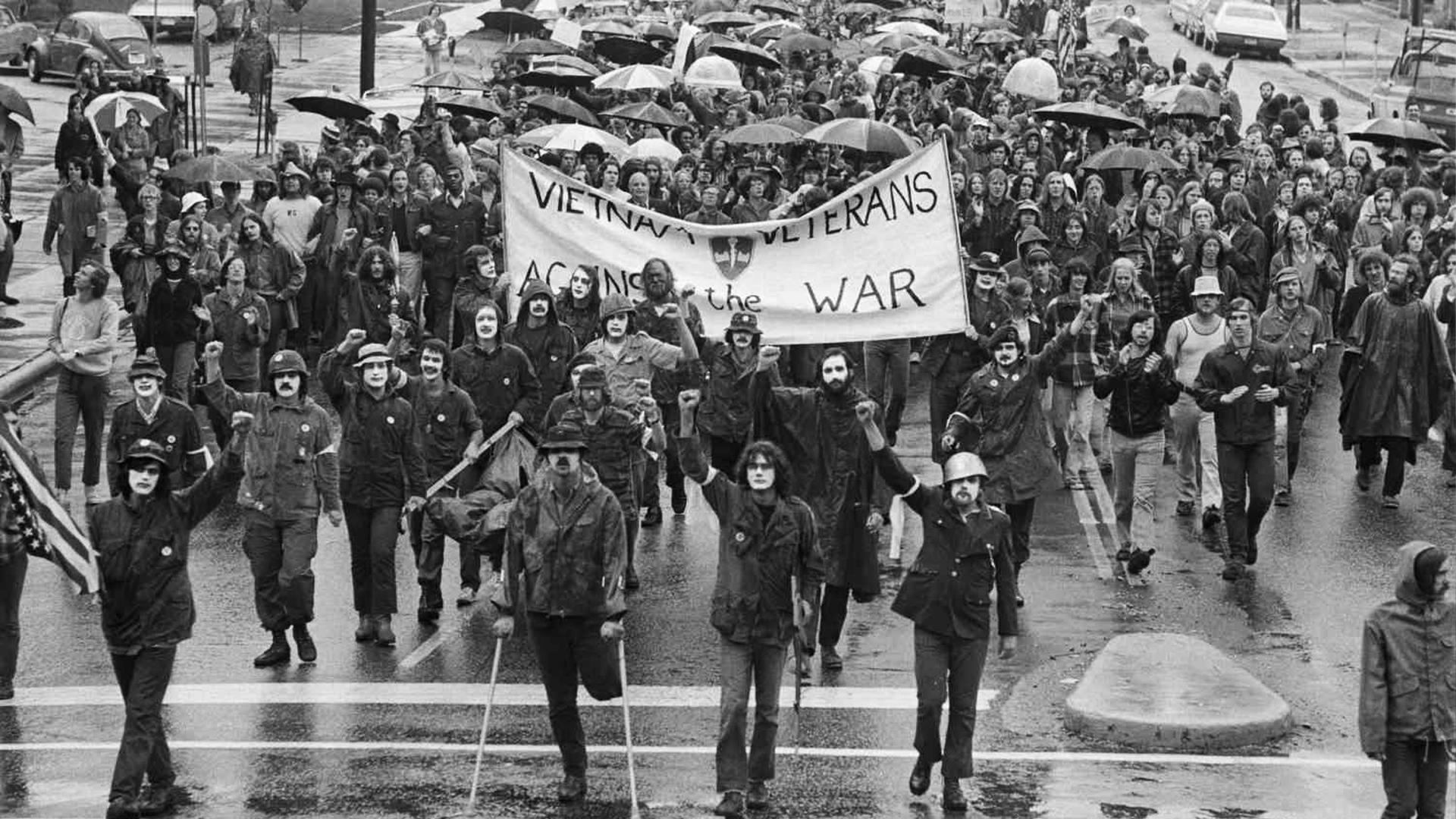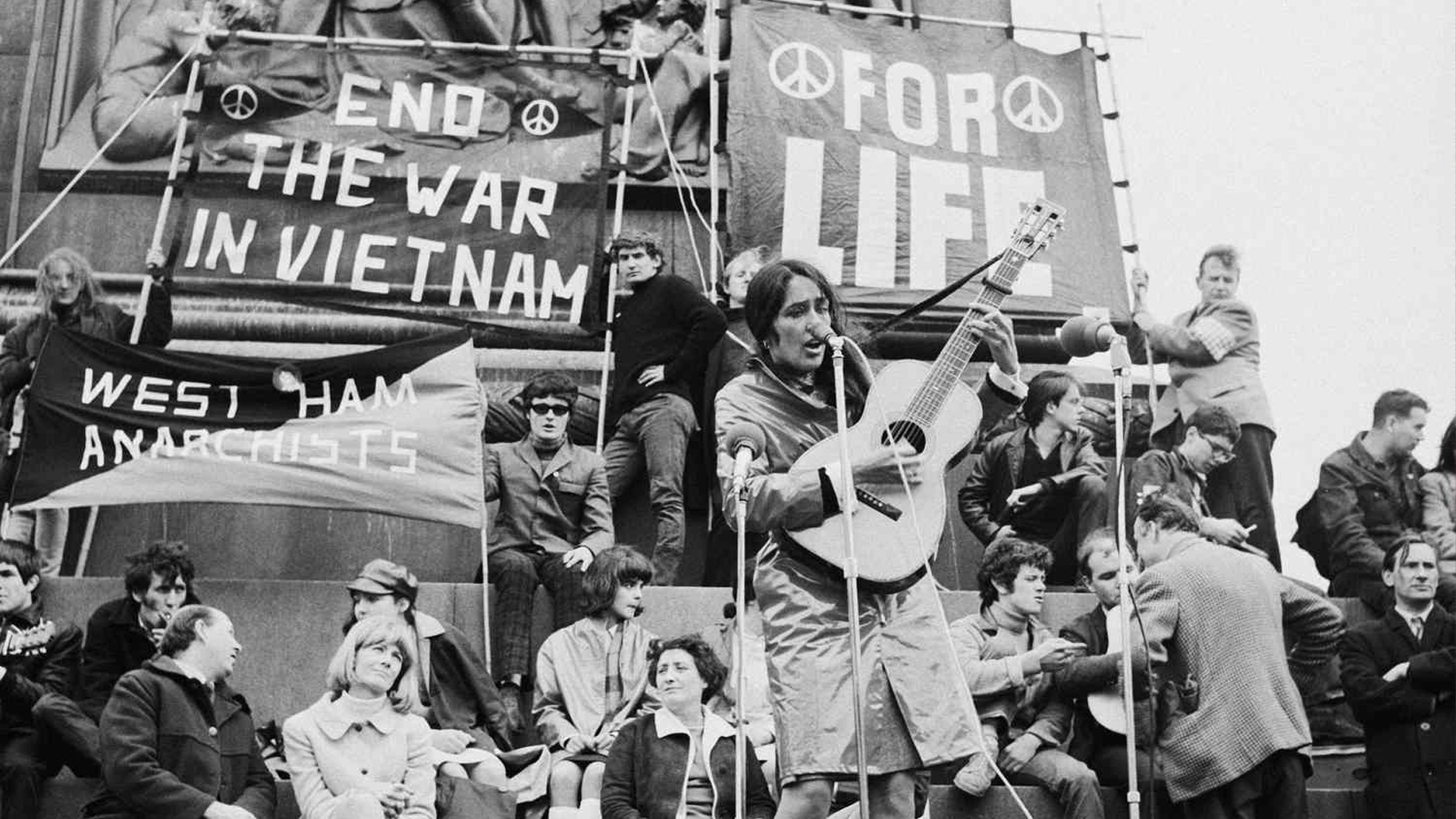Antiwar Demonstrations Sweep 40 U.S. Cities

Protesters during a 1965 antiwar rally.
What Happened?
By 1965, the Vietnam War was escalating, with thousands of young Americans drafted to fight in a distant conflict many no longer believed in. The 'International Days of Protest' that October marked the first time so many people across the nation—and around the world—spoke out together against the war.
In New York City, over 100,000 demonstrators filled the streets, and civil rights leader Martin Luther King Jr. joined a march to the United Nations, calling for peace and moral courage. Across the country, students at universities like Michigan and Berkeley organized sit-ins, vigils, and teach-ins, blending the spirit of the civil rights movement with a growing demand to end the war.
One young man, David Miller, became a national symbol of this movement when he climbed atop a sound truck and burned his draft card in public. Miller’s act of protest—nonviolent but illegal—challenged a new federal law that made destroying draft cards a crime. His arrest and conviction sparked fierce debates about the limits of free speech and the meaning of patriotism.
In Ann Arbor, Michigan, 39 students from the Students for a Democratic Society (SDS) staged a sit-in at the local Selective Service office, singing songs of peace as police warned them to leave. When they refused, they were arrested, fined, and some were even reclassified by draft boards as punishment for their defiance. These students weren’t violent revolutionaries—they were citizens practicing civil disobedience to challenge policies they believed were unjust.
Civil rights groups like the American Civil Liberties Union (ACLU) stepped in, arguing that reclassifying or jailing students for peaceful protest violated their constitutional rights. Their legal battles helped clarify that dissent—even against war—is a protected part of democracy. As one activist put it, 'The real danger isn’t protest—it’s silence in the face of injustice.'
The October demonstrations marked a turning point. They transformed antiwar sentiment from scattered voices into a national conversation. The sight of ministers, mothers, veterans, and students marching side by side revealed that opposition to the war wasn’t unpatriotic—it was deeply American, rooted in conscience and democratic principles.
As the war dragged on, protests grew larger and more determined, leading to nationwide teach-ins, draft resistance, and massive marches on Washington. The movement helped shift public opinion and eventually pressured leaders to end U.S. involvement in Vietnam.
Why It Matters
Looking back, October 15, 1965, wasn’t just a day of protest, it was a day of civic awakening. It showed that democracy depends on participation, and that even when laws punish dissent, conscience can light the way toward justice and change. The 1965 antiwar demonstrations remind us that democracy is not just about voting, it’s about using one’s voice, peacefully and courageously, to question power. They teach that disagreement with government policy does not mean disloyalty, and that activism can shape history when grounded in truth and moral conviction.
?
Why did so many Americans begin protesting the Vietnam War in 1965?
How did David Miller’s act of burning his draft card challenge laws about free speech?
Why did students at the University of Michigan risk arrest to protest the draft?
What role did civil disobedience play in the antiwar movement?
How can protests like these strengthen democracy rather than weaken it?
Dig Deeper
Historian Yohuru Williams explains how antiwar protests grew from small campus demonstrations to a national movement.
Archival footage and first-hand accounts from protesters and journalists who witnessed the Vietnam-era demonstrations that reshaped America.
Related

MLK the Disrupter and the Poor People’s Campaign
Dr. Martin Luther King Jr.’s final chapter was about more than civil rights—it was a bold demand for economic justice that challenged the nation’s values at their core.

The Right to Protest & Civil Disobedience: How Activism Shapes Democracy
From labor strikes to mass demonstrations, activism has been the engine of social change. But what makes a movement successful? This deep dive explores the different roles in activism, the power of civil disobedience, and why protests are essential to democracy.

The First Amendment: America’s Blueprint for Freedom
The First Amendment protects freedoms of speech, religion, press, assembly, and petition. It’s the foundation of American democracy—but also a source of constant debate and interpretation.
Further Reading
Stay curious!
